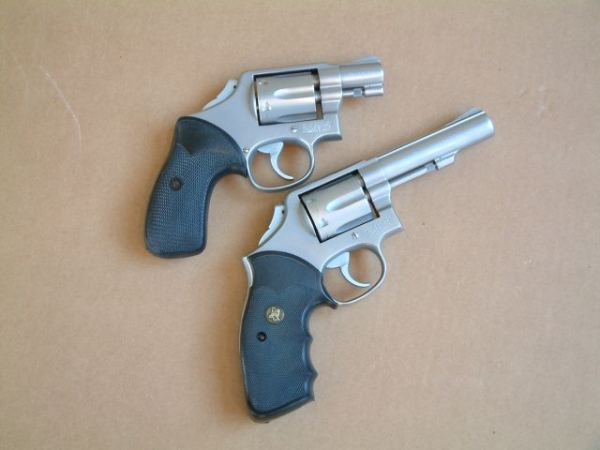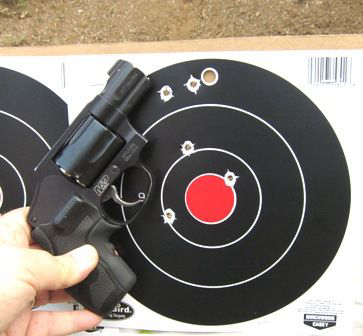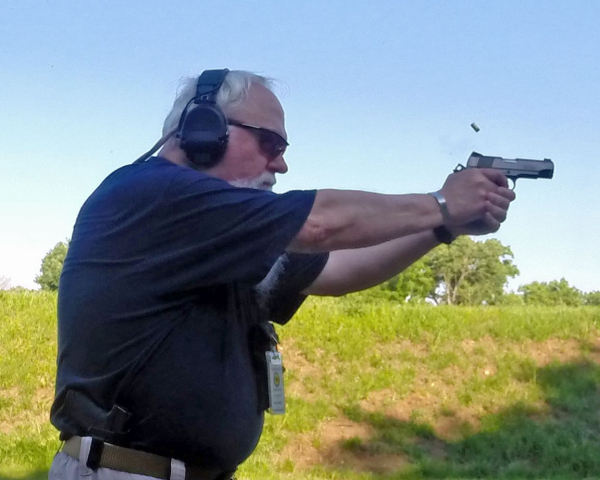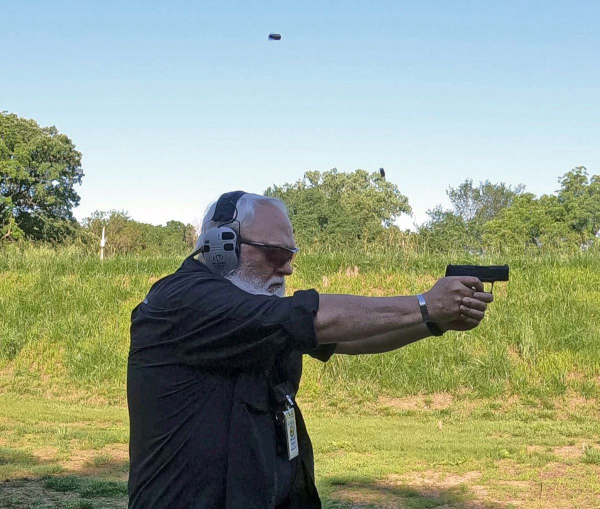It seems that, as a group, we’re similar to automotive enthusiasts, photography hobbyists and other groups (politics?) in the sense that we fall into “A=bad, B=good” types of opinion formation. While it’s functional for the most simplistic of questions (is it better to be armed when someone sets about to kill you?), you don’t have to move very far before this categorical mindset messes you up.
I’ve been so afflicted, on-and-off, for many years. When a youth, for example, I questioned the wisdom of veteran peace officers on their choice of sidearms and caliber for duty use. It was clear “A/B” thinking, as silly then as it is now. That’s only one personal example. I could bore you with more.

Recently, there was an exchange in social media about a revolver that had been rendered “DA-only” (you can only cock the revolver only by use of the trigger; there’s no hammer spur and no single-action notch). The discussion turned a bit ugly.
The owner of the gun posited that he had no need of single action operation in any defense revolver. He wanted no part of the so-called “hair trigger” issue that someone could raise in the aftermath of a shooting – it has been done – and he feared (reasonably) that having a two-pound trigger on the gun in his hand during a critical event could create an unintended firing of the gun.
His reasoning is fine, far as it goes. It was adopted by a few large city police departments in the waning days of the revolver-issue era for just those reasons.

The response? It was accusatory, snarky and altogether unhelpful. Paraphrased, it went something like “so, you have no need to take a precision shot (small target or some distance)? You need to rethink your plan, not base it on one negligent shooting. (sic) The lack of (single action capability) may cost your life or the life of another.”
So, who was guilty of binary thinking? Was it the DAO type or the harsh critic?
Both.
The tell is the use of “all or nothing” terms in the argument. Just because someone can cock the hammer on a revolver doesn’t mean they must. And, as Mr. Snark pointed out, there may be a time you’ll wish you had the single action capability – but not for the reasons stated.
One psychologist refers to binary thinking as “splitting.” When you can’t tolerate ambivalence (having conflicting perceptions toward the same thing at the same time), you may experience anxiety. Not everything is fitting into preconceived categories, it’s not orderly. There’s room for doubt.
Binary thinking helps to soothe that anxiety by denying the uncertainty “and making the world appear simpler and more coherent.”
It ain’t.
You can apply this to most faux-controversies in the shooting arena. To keep it simple, we can examine a bomb-thrower post on social media. The writer posts that an incompetent thinks that an erroneous mathematical computation is correct; the “intelligent” will know the correct equation but ask “why?”


From there, he alleges that high visibility sights on fighting pistols aren’t important. He says that “a hundred years ago” people didn’t notice that the slow-to-acquire, nearly invisible sights weren’t essential on a defense sidearm. He says that’s because good sights aren’t essential for a “close combat weapon.”
You’ll excuse me for excising the all-caps used by our commentator for emphasis.
He went on to note that the 1911 was made for point-shooting and he decried the ignorance of the discipline by the modern practitioner.
Binary much?
Before we go too far down that rabbit hole, a number of competitors (pre-PMO) had already been using the sights as needed depending on factors relating to the competitive endeavor. The fact that they’d trained up to the point that they were operating on near-autopilot for close range coarse accuracy while knowing that every tenth of a second shaved off the time put them closer to the top meant that – optics or not, it was literally analogous to what we used to refer to as “point-shooting.”
That leaves out other critical issues in personal defense. One is “D-zone hits on the range are (potentially tragic) misses on the street.” This comes from decades of force-on-force and video simulator training where those rapidly triggered rounds don’t nearly keep up with the movement of the offender (whether intentional or involuntary).
In defense shooting there is 100% shot accountability; a miss wastes time and could kill or cripple others in the area. Whether the miss was from “point shooting without making reference to the sights” or just shooting too fast lacks relevance.
The damage is done.
A mentor once asked if point shooting was over, obsolete. When a student answered that one always uses the sights for success, he asked “Do you ever miss when shooting using your sights?”
Sheepishly, the student admitted to some misses.
It’s the same thing with so-called point shooting. There are misses.
Back to the old drawing board. It’s a deep pool, conflicted and complicated by nuance.
Let’s avoid the binary thinking. The right answer often is “could be.”
-- Rich Grassi